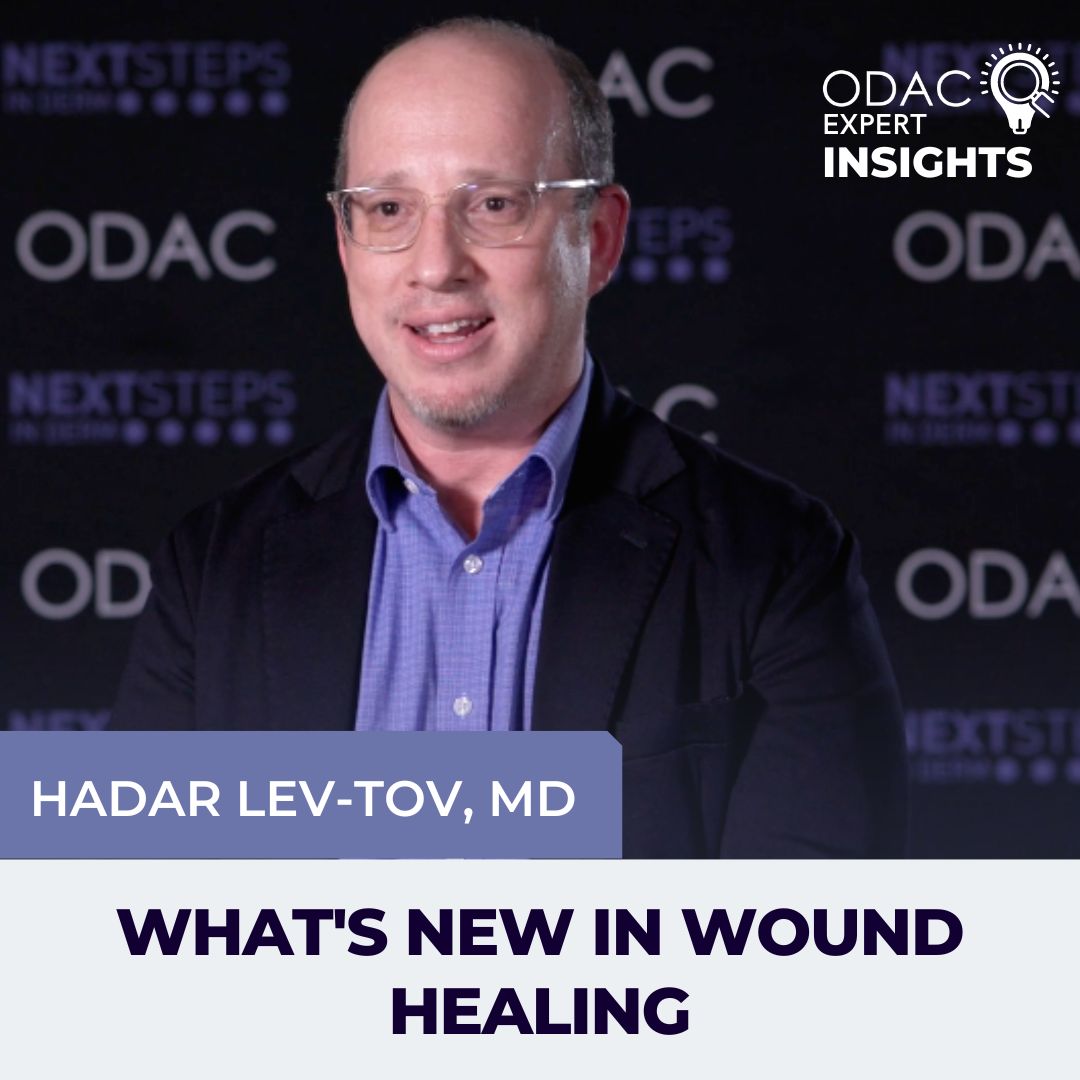Next Steps in Derm, in partnership with ODAC Dermatology, Aesthetic & Surgical Conference, interviewed Dr. Hadar Lev-Tov, associate professor of clinical dermatology and cutaneous surgery at the University of Miami Miller School of Medicine. Watch as Dr. Lev-Tov shares some of the treatments that are emerging in wound healing. Find out why a beta blocker may be the most well-kept secret in healing wounds. Plus learn how applying an electric field can not only help a wound heal faster, but better.
Further Reading
If you want to read more about wound healing, check out the following articles published in the Journal of Drugs in Dermatology:
ABSTRACT
Background: Chronic wounds remain a challenge for the clinician and healthcare system. It is therefore vital for additional therapies that target steps involved in wound recalcitrance. Recently, topical timolol has shown promising results for use in wound healing.
Objective: The goal of this study was to assess timolol’s effectiveness in healing wounds of varying etiologies.
Methods: This multi-center series took place from 2016¬–2019 at the wound healing centers at the University of Miami Health System and the Veterans Affairs Northern California Healthcare. We identified all wound patients who received treatment with topical timolol maleate 0.5% for at least 4 weeks after failing previous treatments. Timolol drops at a dose of 1 drop per cm2 of wound area were instilled with dressing changes twice a day, once a day, every other day, or continuous application. Once they began the study, they stopped all concurrent therapies aside from standard of care. Healing outcomes were classified into 3 categories: healed, defined as complete re-epithelialization of the wound and closure, improved, defined as decreasing wound size area (WSA), and worsening, defined as increasing WSA.
Results: We identified 39 patients, 32 males and 7 females that had a total of 55 chronic wounds of varying etiologies. Thirty-four of the wounds had completely healed, 15 wounds improved in WSA, 4 wounds were unchanged in WSA, and 2 wounds worsened in WSA.
Conclusions: In line with our previous experience, we found topical timolol to be a safe, cost-effective, and efficacious treatment for recalcitrant wounds of varying etiologies.
Collagen Powder in Wound Healing
ABSTRACT
Chronic wounds, such as pressure ulcers, diabetic foot ulcers, and venous leg ulcers, are associated with high costs, poor quality of life, and significant morbidity and mortality. A chronic wound develops when progression through the normal phases of wound healing goes awry, creating a hostile environment with elevated levels of pro-inflammatory cytokines, increased matrix metalloproteinases (MMPs), destruction of extracellular matrix (ECM) components, and diminished activity of growth factors and other soluble mediators. The advent of advanced wound care therapies allows for a targeted approach to the treatment of nonhealing wounds by addressing specific molecular defects in healing. Collagen is an essential building block of the skin that when utilized as an adjunctive wound therapy stimulates and recruits immune cells and fibroblasts and martyrs itself for degradation by MMPs, thereby preserving native ECM structure and promoting healing. Particulate or powdered collagen is processed to minimize covalent cross-linking and is purported to exert its biologic activity immediately upon application. This article critically reviews the current evidence for collagen powder as an adjunctive therapy for chronic wounds and presents indications, limitations, and principles of use. In general, there is a need for high quality studies and randomized control trials to support its use in clinical practice.
Did you enjoy this video interview? Find more here

